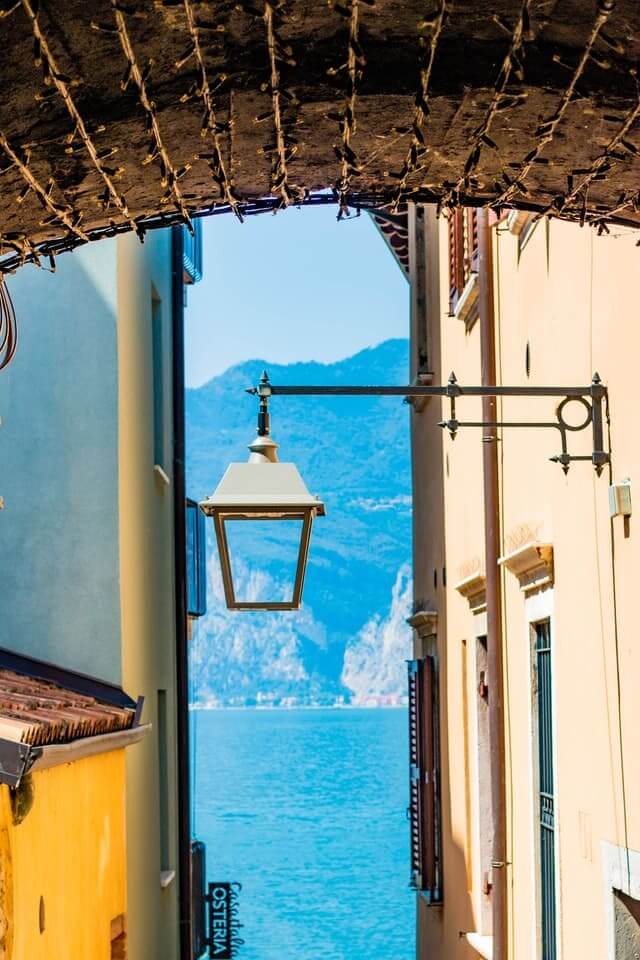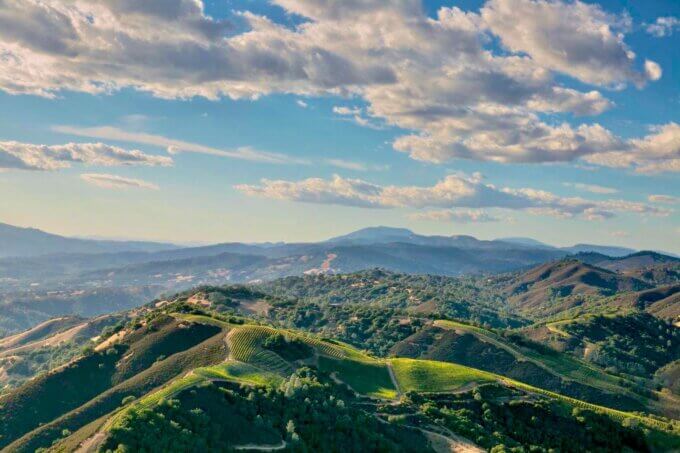Be social! Share the fun!
Destination Lugana for Lugana Wine
November 2nd marked the official Launch of Destination Lugana

Lugana wine is known for its fresh sabidity and high acidty from the influence of nearby Lake Garda

Lugana wine is a delicious white wine from Northern Italy. Recently six Lugana wine producers banded together with Gambero Rosso for a virtual masterclass of their Lugana wine.
Local producers and consumers call the Lugana wine grape variety used “Turbiana.” Yet many skilled tasters might find similarities of the Verrocchio grape from the Italian Marche region.
Perhaps most people around the world still remember and refer to this Lugana wine by the name Trebbiano di Lugana, Trebbiano di Soave, or Trebbiano di Lugana.
*You can learn about Italian wine here
Lugana Wine: Mineral Driven
These mineral-driven Lugana wines possess verve and personality. Affordably priced, they are delicious all-year round and can form the basis of a thirst-quenching apéritif and pairing for a wide assortment of meals.
*Discover Italian Wine Varieties Here
Lugano Wine: Creative Bottle Shapes

For the Lugana wine Masterclass, Gambero Rosso shipped six bottles of Lugana wine to my home. The surprise was the variety of creative bottle shapes. Some were squat. Others tall and slender. Each shape was unique to the producer.
Vibrant, Excited Lugana Wine Producers
It was also a pleasure to meet the producers virtually. In an in-person tasting, the producers are usually sitting at a distance. The ability to hear each producer speak about his or her wine was a welcome pleasure.
The History of the Lugana Wine DOC
Ancient Romans enjoyed Lugana wine. Yet it wasn’t until 1967 that it became the first wine of the Lombardia region to be registered as a DOC.
Taste of White Lugana Wine

Taste of White Lugana Wine
Each wine is unique, mostly depending on how it’s matured (length of time on the lees, vessel, and the time it spends in the vessel). Yet descriptive words can include “salty,” “green olive,” “dry,” and mineral-driven.
Beyond maturation, each of the six Lugana wines had a slightly different taste profile depending on the vineyard soil. Racy acidity characterized yet all the Lugana wines. Aromas and flavors of green olive ranged from subtle to more pronounced.
The Soils
Most vineyards feature dense mineral-rich clay soil, mostly glacial moronic. This compact soil helps the vines produce fewer berries and thus more concentrated fruit for the wine.
All Lugana wines tasted came from100% Turbiana grapes.

Tommasi Viticoltori
Lugana DOC Le Fornaci 2019
The Tommasi family business started in the early 20th century. Today the Tommasis thrive as one of the region’s largest producers, drawing on a vast vineyard and a range that looks to tradition, for inspiration.
One parcel is on a calcareous soil, variously stratified and clayey, the other two have a more sandy composition rich in silt.
Vinification and ageing: Lugana Le Fornaci benefits from slow fermentation at a controlled temperature (14° / 18°) and stripping by natural sedimentation. Aging for about 3 months on lees and fine yeasts followed by aging in steel.
Pasini San Giovanni
Lugana DOC Il Lugana 2019
Founded by Andrea Pasini in 1958, the family business is now managed by cousins Luca, Sara, Laura and Paolo Pasini, the third generation of viticulturists to work 36 hectares of property straddling the Valtènesi and Lugana appellations.
Photovoltaic panels have modernized and now power the cellar. Attention to the environment and eco-sustainability have also led to organic certification.
Vineyards are in the clay soil on the southern shores of Garda Lake.
Grapes macerate before pressing. Fermentation takes place under controlled temperature (18-20° C). Short steel tank batonnage. Bottle refining: 2 months.

Marangona
Lugana DOC 2019
This is a family-run winery, located on the border between Lombardy and Veneto, close to the southern shore of Lake Garda. Vineyards are planted on calcareous and silt-rich clay soil. This influences the vine, bringing minerality and flavor to the wine.
The farm is certified Organic.
Soil is calcareous and clay soil. Vinification: temperature-controlled stainless steel.. Fermentation and vinification are separately carried out for each vineyard of the estate and later the wines are blended, |
Wines are unfined and age in stainless steel for 3 months followed by two months bottle age.
Ca Maiol
Lugana DOC Molin 2018
Cà Maiol was founded in 1967 by Milano’s Walter Contato, south of Lake Garda. In 1996 the winery passed to his sons. Now it is a part of the Santa Margherita group.
Vinification follows cryomaceration (leaving the grape must in contact with the skins at a low temperature) to obtain a Lugana wine that has greater structure and more refined aromas.
*Discover the Italian Grape Grigolino Here

Marangona
Lugana DOC 2019
This is a family-run winery, located on the border between Lombardy and Veneto, close to the southern shore of Lake Garda. Vineyards are planted on calcareous and silt-rich clay soil. This influences the vine, bringing minerality and flavor to the wine.
The farm is certified organic.
Soil is calcareous and clay soil. Vinification: temperature-controlled stainless steel.. Fermentation and vinification are separately carried out for each vineyard of the estate and later the wines are blended, |
Wines are unfined and age in stainless steel for 3 months followed by two months bottle age.
Ca Maiol
Lugana DOC Molin 2018
Cà Maiol was founded in 1967 by Milano’s Walter Contato, south of Lake Garda. In 1996 the winery passed to his sons. Now it is a part of the Santa Margherita group.
Vinification follows cryomaceration (leaving the grape must in contact with the skins at a low temperature) to obtain a Lugana wine that has greater structure and more refined aromas.
Perla Del Garda
Lugana DOC Madreperla Ris 2018
Owners Giovanna and Ettore Prandini devoted their lives to reviving viticulture on the family estate, a property that goes back generations.
Production started in 2006, in a modern cellar that allows for gravity-flow winemaking. Organic certification is already in place, testifying to their commitment to environmental sustainability.
Soil is calcareous clay, morainic origin.
Vinification: acclimatization at 10°C (50°F), careful selection of grapes, soft pressing of whole grapes. Fermentation takes place in temperature-controlled stainless steel tanks (15°C). Ageing: 12 months in stainless steel tanks on yeast lees.
Corte Sermana
Lugana DOC Ris. Sermonna 2015
Corte Sermana, nestled in the hills of Lake Garda, is steeped in tradition. They pride themselves with an interweaving of advanced techniques of soil and vine management.
Vinification: gentle pressing, alcoholic fermentation at controlled temperature in steel tanks and tonneaux. Ageing: 12-18 months in steel tanks on its lees and 12 months in bottle.
Final Thoughts
Most of the Lugana wine I taste takes place at events in New York and London for wine journalists. (in the pre-pandemic days).
A few times in London, I’ve actually seen a Lugana wine on a wine list and always ordered it. The reason was because I secretly crave what I consider to be a slightly saline flavor.
Another reason is that I love stepping out of the “Chardonnay” and “Sauvignon Blanc” styles of wine for something more exotic.
Then Lugana wine pairs so well with grilled fish, which is my usual dish when I’m dining out.
I’m so grateful to Gambero Rosso for showcasing Lugana wine in this Masterclass.